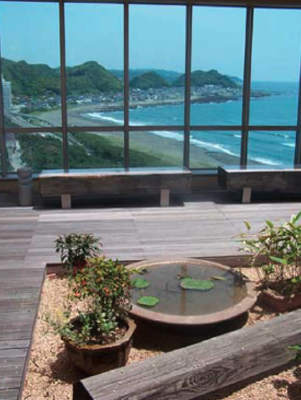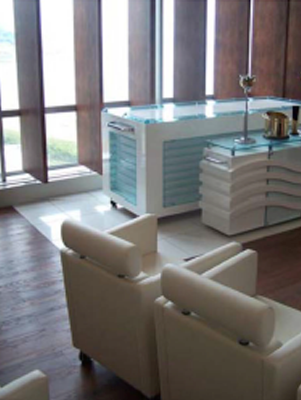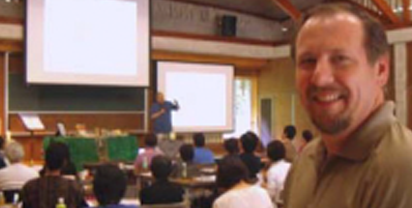Japan
Sacred Art of Living was proud to be invited several times to Japan facilitating our Sacred Art of Living workshop series simultaneously in Japanse and English. The result of our efforts brought an entire group of Japanese students to the US for our initial Anamcara Apprenticeship programs.
Stories from Asia
May 15 – June 3, 2007
Sacred Art of Living in Japan
Dr. Hiroshi Nishino is an exceptionally busy man. He is the Medical Director for the Kameda Medical Center in Kamogawa City, Japan, one of the most prestigious medical institutions in Asia. He is also an apprentice in The Anamcara Project who travels to Bend, Oregon every six months as a program participant.
This summer, a delegation from Sacred Art of Living Center visited Kameda Medical Center during our teaching tour in Asia. This was another example of discovering the mutual blessings that are developing between the Sacred Art of Living and our growing international family.
The site visit was unlike any encounter in North America. We were reminded of the way in which ancestry and antiquity are honored in Japan. Dr. Takaaki Kameda, chairman of Kameda, was our gracious host who explained that he is the 12th generation in his family to manage this facility. Imagine a physician’s lineage of 350 years in the same community. Every aspect of care in their medical center demonstrated this familial relationship. One of the first hospitals in Japan to host a formal chaplaincy program, the hospital chaplain created a chapel on the premises that was spiritually inclusive and distinctively Japanese. We even discovered a stained glass image of the Celtic hero, St. Columba of Iona in the hallways.
The Kameda facility is located on a remarkable piece of property overlooking the Pacific Ocean; across the street is Sea World Japan. Each room overlooks the deep turquoise waters and is appointed more like a first class hotel than a traditional hospital. Kameda is hopeful to become a Pilot Site for the next two year Anamcara Project Apprenticeship program. We were amazed to learn that each Wednesday a group of hospital employees meets to read a chapter in The American Book of Dying. It was remarkable to find our English language book so popularly received by a Japanese medical audience.
The highlight of our visit was to the “morgue” located on the 14th floor of the facility. Rather than hidden away in a basement, this sacred place overlooked the ocean and is called a REIAN SHITSU, which translates to: “spirit-peaceroom”. We were told that the body of every person who died at Kameda was brought to this morgue and placed on its beautiful glass altar. Built with the needs of grieving family members in mind, the morgue did not represent the failure of the medical system in death but honored and celebrated the continuation of life.
On the train ride back to Tokyo, as Dr. Hiroshi shared his passion and vision of the Sacred Art of Living and Dying, I told him that we in America had as much to learn in return. Our prayer is that Sacred Art of Living’s collaboration with places like Kameda Medical Center will both inspire and challenge western mainstream medical culture and its attitudes towards the end-of-life.

Kameda Hospital, Kamogawa City, Japan

Dr. Hiroshi organizesAmerican Book of Dying lunch meetings with hospital employees

The morgue is called a REIAN SHITSU which translates to: "spirit-peace-room".

Meditation Garden

Sacred room for families to gather after death

Sacred Art of Living Delegation to Japan: from left to right: Dr. Hiroshi, Dr. Kameda, Richard Groves, Takashi Matsuda, Dr. Steve Kornfeld, Carol Sack, Joe Richter

Japan's Only Labrynth
Japanese Students Complete Sacred Art of Living and Dying Series
The city of Tokyo became the first Asian location to host all four units of the Sacred Art of Living and Dying Series. Hosted on the campus of the Japan Lutheran College and the Japan Lutheran Theological Seminary, participants attended the third and fourth units with the assistance of bilingual translators. Responses were enthusiastic to the special program elements including the only Chartres inspired labyrinth in Japan and the skillful teaching of Stan and Ann Tomandl, Coma Therapists from Victoria, British Columbia.
Many of the graduates are participants in The Anamcara Project and will continue attending program modules in Bend, Oregon through 2008. Sacred Art of Living Center is grateful to program hosts, Jim and Carol Sack and the Tokyo-based JELC [Japanese Evangelical Lutheran Church] office who have done an extraordinary job helping to translate the entire program series for the first time in a second language. As a result of their collaboration, efforts are now underway to translate The American Book of Dying into Japanese with the assistance of program graduates.

Participants experience body-mind-spirit healing

Joe Richter from SALC offers logistic support

Harpist demonstrating music modes

Colorful local temple honoring children

Richard Groves works with translators

Beauty and support of Japanese environment
